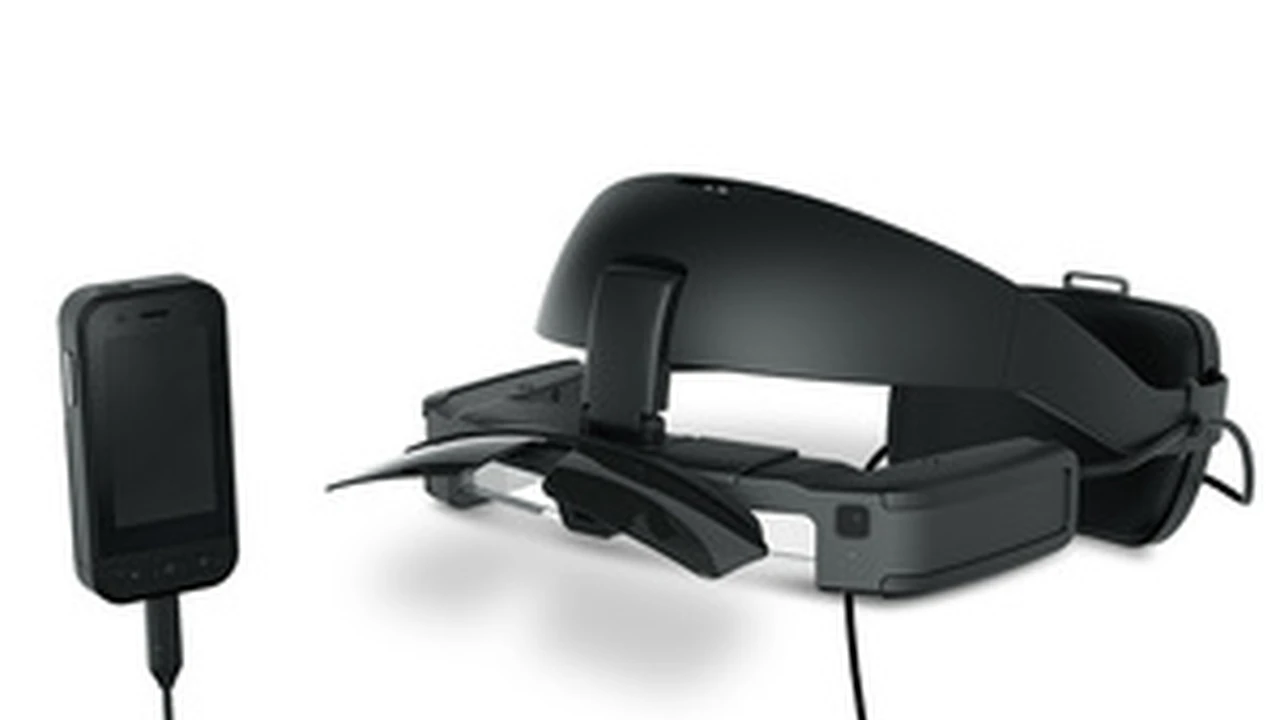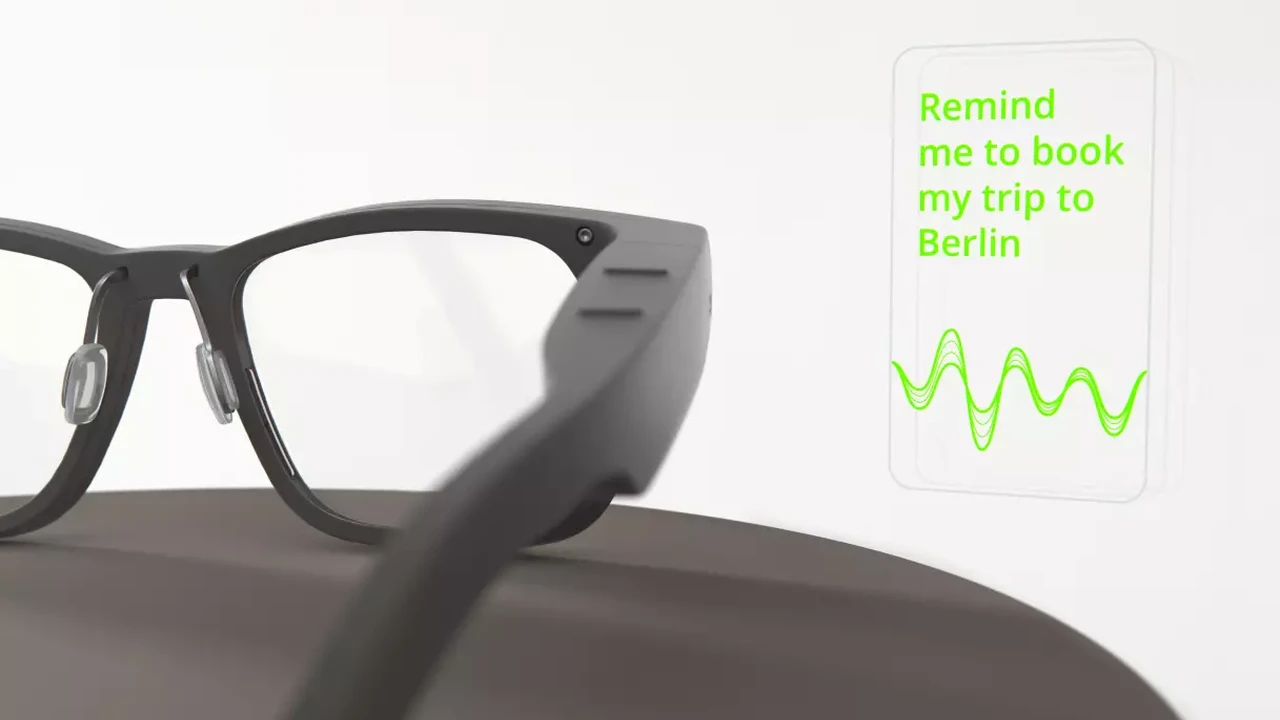Epson Moverio Smart Glasses Review AR Capabilities
Discover the augmented reality capabilities of Epson Moverio smart glasses in our comprehensive review.

Epson Moverio Smart Glasses Review AR Capabilities
Understanding Epson Moverio Smart Glasses What Sets Them Apart for AR
When we talk about smart glasses, many names might come to mind, but Epson Moverio often stands out, especially when the conversation shifts to augmented reality (AR). Unlike some smart glasses that focus on notifications or audio, the Moverio series has consistently prioritized a true AR experience. This means overlaying digital information onto your real-world view, not just showing you a small screen in your periphery. Epson, a company renowned for its projectors and printers, has leveraged its display technology expertise to create transparent smart glasses that are genuinely designed for AR applications. This review will dive deep into what makes Moverio a significant player in the AR smart glasses market, exploring its core technology, various models, and practical use cases.
The Moverio line isn't just a single product; it's a family of devices, each tailored for specific professional and sometimes consumer-level AR needs. From the BT-300 to the BT-40 and BT-40S, Epson has iterated on its design and capabilities, always with a focus on optical see-through AR. This is crucial because it allows users to maintain full situational awareness while interacting with digital content. We'll examine how this optical transparency is achieved and why it's a key differentiator from other smart glasses that might use a camera pass-through for AR, which can introduce latency and a less natural viewing experience.
Key Features and Technology Behind Epson Moverio AR
Epson Moverio Display Technology and Visual Experience
At the heart of Epson Moverio smart glasses is their unique Si-OLED (Silicon Organic Light Emitting Diode) display technology. This micro-display technology allows for a high-resolution, vibrant, and transparent viewing experience. Unlike traditional LCD or LED displays, Si-OLED offers superior contrast ratios, true blacks, and a wider color gamut, which is essential for realistic AR overlays. The transparency of these displays means that digital content appears to float seamlessly in your field of view, rather than being confined to a small, opaque screen. This optical see-through design is a significant advantage for applications where maintaining a clear view of the real world is paramount, such as in industrial settings, drone piloting, or even museum tours.
For instance, models like the Moverio BT-300 and BT-350 boast a resolution of 1280 x 720 pixels, providing a sharp and clear image. The newer BT-40 and BT-40S models elevate this further with a Full HD 1920 x 1080 resolution, offering an even more immersive and detailed AR experience. The field of view (FOV) is also a critical factor in AR. While not as wide as some VR headsets, the Moverio's FOV is optimized for overlaying information without obstructing the user's natural vision. This balance is crucial for practical AR applications where users need to interact with both digital and physical environments simultaneously.
Epson Moverio Processing Power and Connectivity Options
To power the AR experiences, Epson Moverio smart glasses are equipped with capable processors. Older models like the BT-300 typically feature an Intel Atom processor, while newer iterations such as the BT-40 and BT-40S often utilize more modern chipsets, providing improved performance and power efficiency. This processing power is essential for rendering complex AR applications, handling real-time data, and ensuring a smooth user experience without lag.
Connectivity is another vital aspect. Moverio smart glasses typically offer Wi-Fi and Bluetooth connectivity, allowing them to connect to networks, external devices, and controllers. Some models also include a USB-C port for data transfer and charging. The BT-40S, for example, comes with a dedicated controller unit that houses the main processing power, battery, and additional connectivity options, including a larger battery for extended use and more robust processing for demanding applications. This modular design allows for greater flexibility and can be particularly beneficial in industrial environments where the glasses themselves need to be lightweight and comfortable, while the processing unit can be carried separately.
Epson Moverio Sensors and Tracking Capabilities for Immersive AR
For effective AR, precise tracking of the user's head movements and the environment is crucial. Epson Moverio smart glasses incorporate a range of sensors to achieve this. These typically include accelerometers, gyroscopes, and magnetometers, which work together to provide accurate head tracking. This allows digital content to remain stable and correctly positioned within the real world as the user moves their head.
Many Moverio models also feature a front-facing camera. This camera isn't just for taking photos or videos; it plays a vital role in computer vision and spatial awareness for AR applications. It can be used for marker-based tracking, where the glasses recognize specific images or QR codes in the environment to overlay relevant digital information. Some advanced applications might even leverage the camera for markerless tracking, though this is more computationally intensive. The camera also enables features like remote assistance, where a remote expert can see what the user is seeing and provide guidance by drawing annotations directly onto the user's field of view.
Popular Epson Moverio Models and Their Specific Use Cases
Epson Moverio BT-300 The Pioneer in Transparent AR
The Epson Moverio BT-300 was a significant step forward in transparent AR smart glasses. Released a few years ago, it quickly gained traction for its lightweight design and impressive Si-OLED display. It was particularly popular among drone pilots, allowing them to see real-time drone telemetry and camera feeds overlaid directly onto their view of the drone, eliminating the need to constantly look down at a separate screen. This greatly enhanced safety and precision during flights. Its price point at launch was around $700-$800, making it accessible for prosumers and small businesses looking to experiment with AR.
Beyond drones, the BT-300 found applications in cultural institutions for augmented tours, in healthcare for training simulations, and in some industrial settings for basic instruction overlays. Its relatively compact form factor and comfortable fit made it suitable for extended wear. While newer models have surpassed its specifications, the BT-300 remains a testament to Epson's early commitment to optical see-through AR.
Epson Moverio BT-350 Designed for Commercial and Enterprise Use
Building on the success of the BT-300, the Moverio BT-350 was designed with more robust commercial and enterprise applications in mind. It featured a more durable build quality, making it suitable for demanding industrial environments. The BT-350 also offered improved battery life and a more secure fit, crucial for workers who might be wearing the glasses for an entire shift. Its price point was typically higher, ranging from $1,000 to $1,500, reflecting its enterprise-grade features and support.
The BT-350 excelled in areas like remote assistance for field service technicians, where experts could guide on-site personnel through complex repairs. It was also adopted in logistics for order picking, providing workers with visual cues and inventory information. Museums and theme parks also utilized the BT-350 for interactive exhibits, offering visitors an enhanced experience with overlaid historical information or animated characters. Its focus on durability and extended use made it a workhorse for businesses looking to integrate AR into their operations.
Epson Moverio BT-40 and BT-40S The Latest in High-Resolution AR
The Epson Moverio BT-40 and BT-40S represent the latest generation of Moverio smart glasses, bringing significant upgrades in display resolution and overall performance. The BT-40 is a standalone smart glasses unit, while the BT-40S includes a dedicated controller unit for enhanced processing power and battery life. Both models feature a stunning Full HD (1920 x 1080) Si-OLED display, offering unparalleled clarity and detail for AR content. This higher resolution is particularly beneficial for applications requiring precise visual information, such as detailed schematics or intricate 3D models.
The BT-40, priced around $900-$1,000, is ideal for developers and businesses looking for a high-resolution, lightweight AR experience. The BT-40S, with its controller, is more geared towards demanding enterprise applications, offering extended battery life (up to 5 hours) and more robust processing for complex AR software. Its price point is typically in the $1,500-$2,000 range. These models are finding strong adoption in healthcare for surgical overlays, in engineering for design visualization, and in education for immersive learning experiences. The improved comfort and higher resolution make them suitable for a wider range of professional AR use cases, pushing the boundaries of what's possible with transparent smart glasses.
Comparing Epson Moverio with Other AR Smart Glasses
Epson Moverio vs Microsoft HoloLens 2 Enterprise Focus
When comparing Epson Moverio with Microsoft HoloLens 2, it's important to understand their distinct approaches to AR. HoloLens 2 is a self-contained mixed reality headset, meaning it has all its processing power built directly into the headset. It offers a wider field of view and advanced spatial mapping capabilities, allowing for more complex and interactive 3D holograms that can persist in the environment. HoloLens 2 is a powerhouse for high-end enterprise applications, particularly in design, engineering, and remote collaboration, where complex 3D model interaction is key. Its price point is significantly higher, typically around $3,500.
Epson Moverio, on the other hand, focuses on optical see-through AR with a lighter form factor and often relies on a tethered controller or external device for processing. While its FOV might be narrower than HoloLens 2, its optical transparency is often preferred in scenarios where maintaining a clear, unobstructed view of the real world is critical, such as in manufacturing or drone operation. Moverio's strength lies in overlaying information and providing visual guidance without completely immersing the user in a digital world. It's generally more affordable and less computationally intensive, making it suitable for a broader range of practical, information-overlay AR applications.
Epson Moverio vs Nreal Air Consumer-Oriented AR
Nreal Air smart glasses represent a more consumer-oriented approach to AR, focusing on media consumption and light productivity. They are designed to be lightweight and stylish, resembling regular sunglasses. Nreal Air primarily functions as a portable external display for smartphones, laptops, or gaming consoles, projecting a large virtual screen into the user's field of view. While they offer some AR capabilities, their primary use case is personal entertainment and productivity, allowing users to watch movies or work on a large virtual screen anywhere. Their price point is typically around $400-$600.
Epson Moverio, in contrast, is fundamentally built for true augmented reality applications where digital content interacts with the real world. Its transparent display and focus on enterprise-grade features like precise tracking and industrial durability set it apart. While Nreal Air is great for consuming content, Moverio is designed for creating and interacting with AR experiences in professional settings. The Moverio's optical see-through design is also a key differentiator from Nreal's birdbath optical system, which can sometimes feel less transparent.
Epson Moverio vs Vuzix Smart Glasses Industrial and Enterprise Solutions
Vuzix is another prominent player in the enterprise smart glasses market, offering a range of devices like the Vuzix Blade and Vuzix Shield. Vuzix smart glasses often feature a more rugged design, built to withstand harsh industrial environments. They typically focus on providing hands-free access to information, remote assistance, and workflow guidance for frontline workers. Vuzix models often integrate powerful processors and robust connectivity options, making them suitable for demanding industrial applications. Their pricing varies widely depending on the model and features, often ranging from $800 to over $2,000.
Epson Moverio and Vuzix share a similar target market in enterprise and industrial AR. Both prioritize durability and functionality for professional use. The key differences often lie in their display technologies and specific design philosophies. Epson's Si-OLED transparent display offers superior color and contrast for AR overlays, while Vuzix often uses waveguide optics or micro-LED displays. The choice between Moverio and Vuzix often comes down to the specific application requirements, preferred display characteristics, and ecosystem support. Both are strong contenders for businesses looking to implement AR solutions.
Practical Applications and Real-World Impact of Epson Moverio
Epson Moverio in Healthcare Training and Surgical Assistance
Epson Moverio smart glasses are making significant strides in the healthcare sector. In medical training, they allow students to visualize anatomical structures or surgical procedures overlaid onto mannequins or even live patients (under supervision), providing an immersive and interactive learning experience. For surgical assistance, Moverio can display patient vitals, medical images (like X-rays or MRIs), or surgical guides directly in the surgeon's field of view, reducing the need to look away from the patient and improving precision. This hands-free access to critical information can enhance efficiency and safety in the operating room. The transparent display ensures that surgeons maintain full awareness of their physical environment.
Epson Moverio in Manufacturing and Logistics Workflow Optimization
In manufacturing and logistics, Moverio smart glasses are proving invaluable for optimizing workflows and improving efficiency. Workers can receive step-by-step assembly instructions, quality control checklists, or inventory information directly in their line of sight, eliminating the need for paper manuals or handheld devices. This hands-free operation allows for faster and more accurate task completion, reducing errors and improving productivity. For example, in a warehouse, Moverio can guide pickers to the correct items and display quantities, streamlining the order fulfillment process. The durable design of models like the BT-350 makes them well-suited for these demanding environments.
Epson Moverio for Remote Assistance and Field Service
One of the most impactful applications of Epson Moverio is in remote assistance for field service technicians. When a technician encounters a complex problem on-site, they can connect with a remote expert who can see exactly what the technician sees through the Moverio's camera. The expert can then provide real-time guidance by drawing annotations, highlighting specific components, or displaying relevant diagrams directly onto the technician's view. This significantly reduces downtime, minimizes travel costs for experts, and ensures that repairs are completed efficiently and correctly. This capability is particularly valuable in industries like machinery repair, telecommunications, and utilities.
Epson Moverio in Cultural Institutions and Tourism Enhanced Experiences
Museums, art galleries, and tourist attractions are leveraging Epson Moverio to offer enhanced visitor experiences. Imagine walking through a historical site and seeing augmented reality overlays of how buildings looked centuries ago, or having virtual characters appear to tell stories about artifacts. Moverio can provide multilingual information, interactive maps, and 3D reconstructions, making cultural experiences more engaging and informative. This allows visitors to delve deeper into the exhibits without being distracted by a separate screen, maintaining a connection with the physical environment while enriching it with digital content.
The Future Outlook for Epson Moverio and AR Smart Glasses
Epson Moverio Continued Innovation and Market Position
Epson has consistently demonstrated its commitment to the AR smart glasses market with continuous innovation in its Moverio line. We can expect future iterations to feature even higher resolution displays, wider fields of view, and more advanced sensor arrays for improved spatial computing. As the underlying technology matures, Moverio glasses are likely to become even lighter, more comfortable, and more seamlessly integrated into everyday eyewear designs. Epson's focus on optical see-through AR positions it uniquely in the market, catering to specific professional needs where transparency and real-world awareness are paramount.
The company's strong relationships with enterprise clients and developers will likely lead to more tailored solutions and a richer ecosystem of AR applications. As AR technology becomes more mainstream, Epson Moverio is well-positioned to capture a significant share of the professional AR market, especially in sectors that prioritize clear vision and hands-free information overlay.
The Broader Impact of AR Smart Glasses on Industries
The impact of AR smart glasses, including those from Epson Moverio, on various industries is only just beginning to be fully realized. We're seeing a shift towards hands-free computing and contextual information delivery across manufacturing, healthcare, logistics, and education. As the technology becomes more affordable and robust, its adoption will accelerate, leading to significant improvements in efficiency, safety, and training. The ability to overlay digital information onto the real world is fundamentally changing how we work, learn, and interact with our environment.
Looking ahead, AR smart glasses will likely become an indispensable tool for frontline workers, enabling them to perform complex tasks with greater accuracy and less training. They will also transform how we consume information, moving beyond flat screens to interactive, spatial data. The convergence of AR with AI, 5G, and cloud computing will unlock even more powerful applications, making smart glasses an integral part of the next wave of digital transformation across industries worldwide.
:max_bytes(150000):strip_icc()/277019-baked-pork-chops-with-cream-of-mushroom-soup-DDMFS-beauty-4x3-BG-7505-5762b731cf30447d9cbbbbbf387beafa.jpg)






